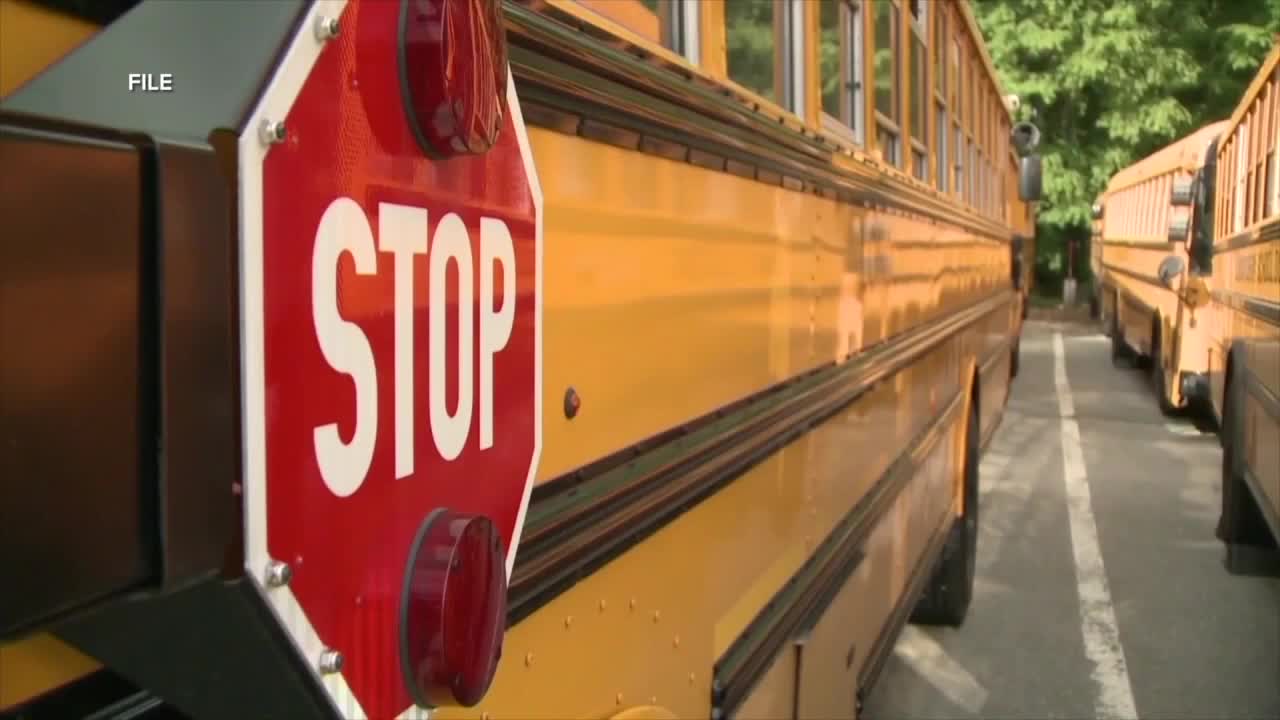DETROIT, Mich. (WXYZ) — It's a big day across metro Detroit, as thousands upon thousands of students are waking up to get ready to start a new school year. That includes students in the state's largest district: the Detroit Public Community School District (DPSCD).
This year, the district has around 108 schools, serving more than 52,000 students. The district has made strides to improve its standing over the past few years, including increasing graduation rates, providing better salaries for teachers, and raising the literacy rate for its students.
This year, chronic absenteeism is a main priority. Absenteeism becomes chronic when a student misses at least 18 days of the school year. In the last school year, the district's rate was at 60 percent, double the state average. To get more kids in the classroom this year, the district is testing out a pilot program, offering bus transportation for students at two high schools.
Watch Brittany's report in the video player below
The traditional, yellow school bus service is set to help two high schools in Detroit: East English Village and Henry Ford. One man we talked to, Verner Jones, said that his East English Village Graduate would have used the system, which hopes to give students a safe and direct way to school and get more kids in the classroom.

"Yellow bussing, I grew up with it, I used it," Verner told us. "They should bring it back, it should have been back. It probably should never have left."
Right now, DPSCD yellow bus services stop after eighth grade, unless the student has a disability or struggles with housing. Otherwise, high schoolers have to either get a ride, walk or take a DDOT bus, like Gloria Johnson's kids and grandkids did.

"And with all the other people on there with the school kids, that seems like it was dangerous for the school kids, and those city buses they aren’t always on time. A lot of my grandkids they were walking home," Gloria said. "Kids were chasing them home wanting to jump them, fighting after school."
It’s not like it was back in the day when you were able to walk freely with groups of kids," Verner said.
Safety is one reason both high schools are part of the pilot program, along with chronic absenteeism. In the 2023-24 school year, Henry Ford had an 88 percent chronic absenteeism rate, with East English Village's being even higher at 94 percent.

"The most recent year, the (2024-25 school year), we were able to reduce that by 15-17 percentage points," said DPSCD Superintendent Dr. Nikolai Vitti. "Still high in the 80s, low 70s."
With only half of students attending their neighborhood high schools, Dr. Vitti said getting to class may be the hurdle.
"What we hear from the kids is 'The city buses are late' or 'It's not close to my house' or 'I’m taking two buses to get to school,'" Dr. Vitti said.
High school yellow bus services ended with Detroit's financial struggles a decade ago. With this pilot program, Henry Ford and East English Village get four buses each. They'll pick students up at pre-established corners within each school's boundary.
Both Gloria and Verner said if their kids were starting Monday, they'd be some of the first to board.
"Oh, hours," Verner said when asked about how much time the buses would have saved him over the years. "Hours. You figure an hour-and-a-half every day, maybe 2-3 picking up and dropping off."
"Yes I would (have used it)," Gloria said. "I would have told them to go right over by that corner and make sure you be there."
The goal, Dr. Vitti said, is to give DPSCD students the best chance they have to succeed. Students who miss 18 or fewer school days are up to five times more likely to be at or above grade-level in math and reading, and to be college-ready for the SATs. Funds for this program are built into the budget; it can also be stopped if they see that no students are using the service.




